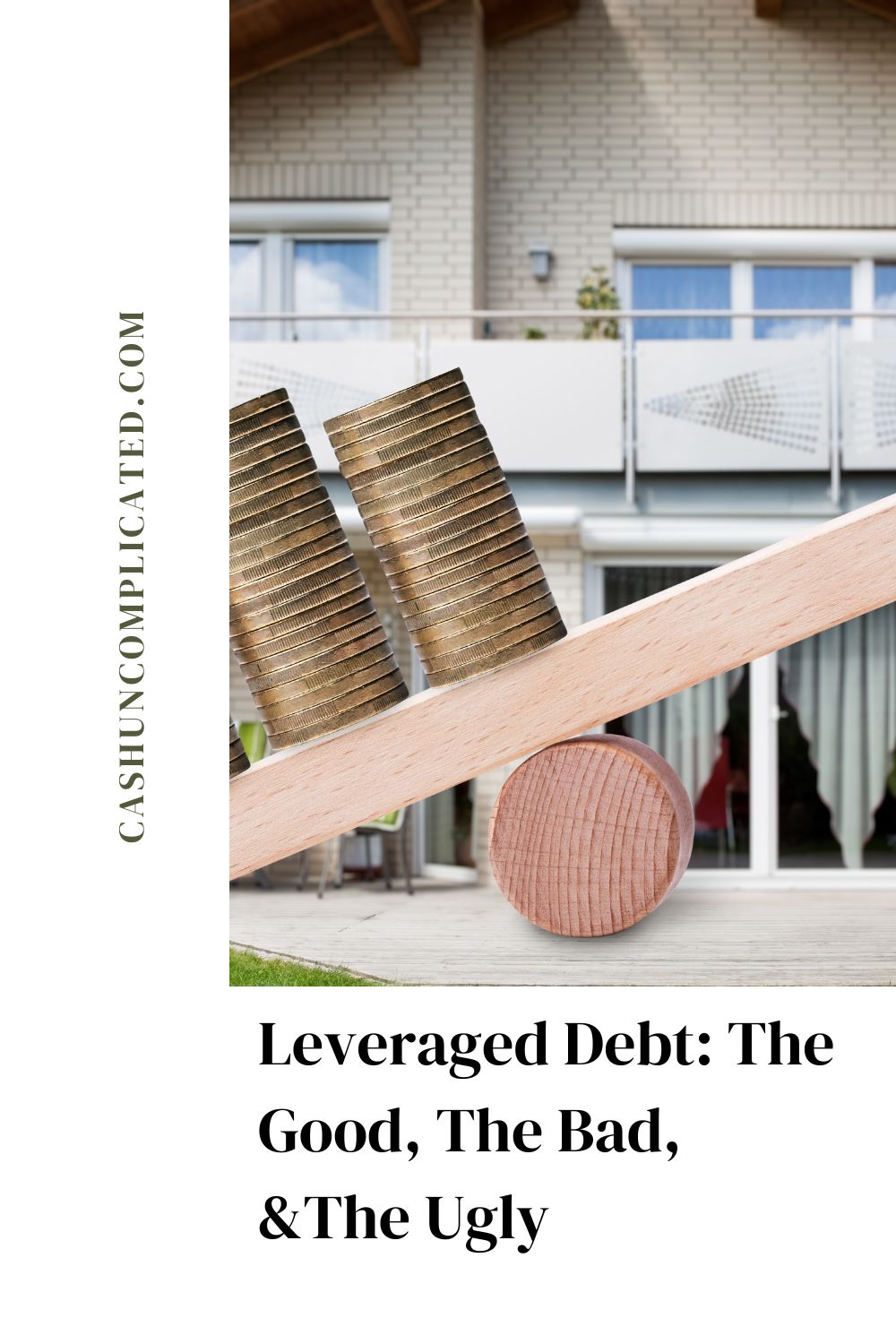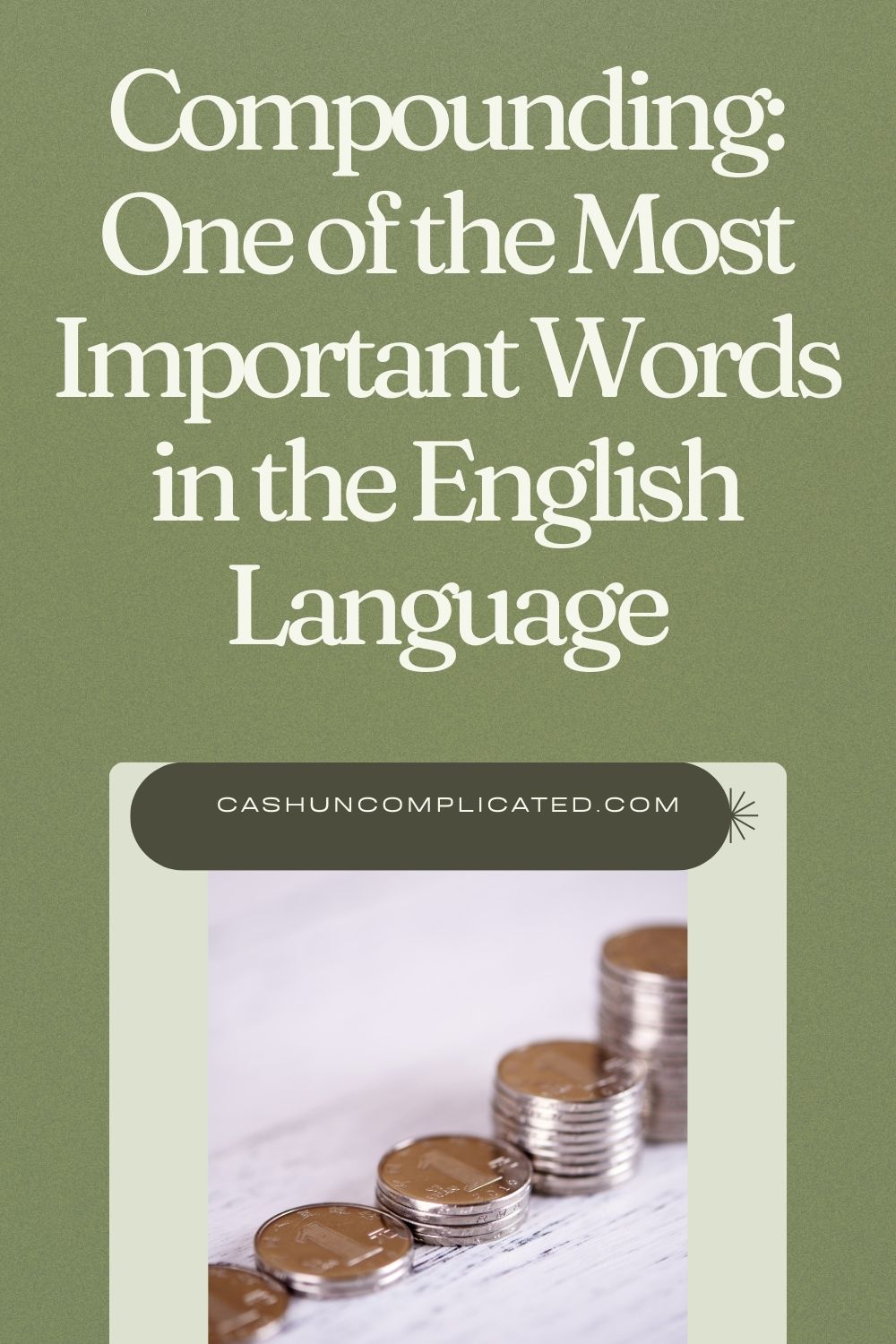There is a lot of bad financial information out there. Whether it’s from a clickbait ad, a neighbor with hot stock tips, a headline grabbing article, or well-meaning family members—bad information is all around us. With bad information comes money myths. These are my top 12 money myths.
12. Renting is Throwing Away Money
I’m a huge proponent of owing real estate. I own my house and have a few rental properties. So this isn’t one of those blog posts that talks about how bad it is to own. But I don’t like the phrase renting is throwing away money. It’s just not true. There are many circumstances where it actually makes more financial sense to rent.
Related: Don’t Be So Dang Dogmatic: Some Financial Rules Are Meant to Be Broken
It would make sense for someone moving to a new city for just a year or two to rent instead of buy. That person is there for a job and has no plans to stay for an extended period or own rental property in that city. Or someone who is planning on moving to a new city, but wants to try it out first for several months to a year. After renting for around a year, they can decide they want to stay and buy, or move somewhere else. There’s a lot less risk this way.
There are many other scenarios in which it makes sense to rent, but I’ll just list a few.
- You’re getting an exceptional deal in a rent controlled apartment
- You get significantly reduced rent through someone you know
- It’s outrageously expensive to purchase, but reasonable to rent
- You want to experience city life, but not necessarily own property in a big city
- You’re at a place in your life where you just don’t want to own property
It’s important to assess your individual situation and make a decision based on your current needs. You may eventually end up purchasing a home, or you may decide to keep renting. Either way, don’t let an old saying like renting is throwing away money influence your decision.
11. Buying Things on Sale Always Saves You Money
Buying things on sale is great when it’s something you already purchase regularly. But not so great when we purchase things we normally would not have bought. In my blog post How I Saved $50 at the Store in 45 Seconds, I identify three criteria for purchases. One of those criterion is the item has to be something you already use or eat regularly.
In this post, I gave the example of a protein bar my wife and I already eat. It’s something we would purchase on sale or not, so when there was a big sale, we bought in bulk.
Here’s where people get into trouble. Someone goes to the store to purchase a new pair of shoes and finds a jacket on sale for $140, regularly priced at $220. They buy the jacket and come home happy thinking they just saved $80 on a new jacket. $220 minus $140 is $80 so $80 saved, right?
Problem is, that person going to the store had no need for a new jacket, and no intent to make the purchase in the first place. He already has three newer jackets in his closet, and only uses two of them regularly. Plain and simple, he didn’t need the jacket and had no desire to get a new one until he accidentally ran into one on sale. The purchase lacked intentionality.
I would actually make the argument that he didn’t save $80, but spent $140 he never would have spent in the first place.
10. An Advantage of Renting is That You Don’t Have to Worry About Repairs
Number 12 on the list addressed the old saying that renting is throwing away money. Number 10 also addresses renting—making repairs to the property in this case. There’s an old thought that renters don’t have to deal with repairs. That’s not true for two reasons:
- Repairs are embedded in rent and rent increases
- Renters are physically living in the property that requires repair
Repairs are embedded in rent and rent increases: When an investor purchases a property, she analyzes the cost of the property. That analysis includes expected repairs, maintenance, and capital expenditures (large repairs like replacing the roof and heating unit). Those repairs are embedded into the monthly rent to make sure the property is a good investment.
As the cost of repairs go up over the years, the majority of investors will raise the rent to cover those repairs. There is nothing wrong or unethical about landlords doing this, it’s actually smart business. The end result is that tenants are covering the cost of those repairs, they’re just not directly paying the repairperson.
Renters are physically living in the property that requires repair: If something breaks in a home you are physically living in, it doesn’t matter if you own or rent at that point. The fact is that you are living in a home that requires repair.
For example, if you have a kitchen sink that’s backed up, you’re living in a home with a backed up sink. That’s an inconvenience whether you own the house or not. If you own the home, you either fix it yourself or call someone to make the repair. If you rent, you call the landlord/property manager, who then makes the repair themselves or calls someone to make the repair.
Whatever the process, you are still living in a home with a backed up sink. That might be a big inconvenience for you, or very small on your radar. Either way, the person living with it is impacted.
9. Credit Cards Are Always Bad
Credit cards on their own are not bad. What’s bad is carrying a balance on a credit card, racking up fees and paying interest. In a vacuum, a credit card is simply a way to purchase something. Whether you’re using a credit card, cash, a debit card, or physically writing a check, it’s a form of payment.
Look at it another way. Paying for groceries with a debit card without the proper funds in your checking account, and getting an overdraft fee is bad. That’s an irresponsible use of a debit card. Likewise, paying for something with a credit card without having the money to pay the balance is an irresponsible use of the credit card. So it’s not necessarily the credit card that’s the issue, it’s the inappropriate use of the card.
Some would argue that it’s easier to spend using a credit card because it’s psychologically easier to pull out the card than to take cash out. And they would have a point. Still, the issue isn’t necessarily the credit card itself, it’s the mentality of the person using the card.
Credit cards are such a big topic that I have an entire chapter in my book about them. It would be impossible to cover everything about credit cards in a couple paragraphs, but they are not all bad 100 percent of the time. Some credit cards even give you cash back or rewards like airline miles. When used responsibly, credit cards can actually be a good thing.
8. You Have to Complete All Home Repairs Yourself
There’s a myth that if you own a home, you have to do all repairs yourself. Visions of weekends spent repairing faucets and leaky toilets are in the forefront of the minds of new home buyers all across the country. The reality though is that any home repair can be hired out. People can choose to do their own repairs, but they don’t have to.
Yes, it’s usually less expensive to complete a home project yourself, but there’s no mandate that says you have to do it. Others may prefer to do it themselves because they know it’s done right. But a homeowner can also conceivably hire out every little thing and never have to do a repair themselves. Taking it to the extreme, you can literally hire someone to change a lightbulb for you.
As repairs come up, assess whether it would be best for you to do it or hire it out. It doesn’t have to be all or nothing either. You may decide you’ll do all the yardwork and routine house maintenance, but hire out anything that involves electricity and plumbing. Don’t get caught in the trap of thinking you have to do it all, it’s just not true.
7. You Have to Put 20 Percent Down to Buy a House
You always have to put down 20 percent to purchase a house. Not true. This myth puts people into a panic because they look at the daunting numbers and immediately think there’s no way they can do that. Many give up at this point. Especially if the median price in your area is $500,000 or more. A 20 percent down payment on a $500,000 home is $100,000 plus closing costs.
People see this monstrous number and think there’s no way they can swing that much money. It’s not true though. There are many loan programs that require a down payment of five percent or less. Five percent down on a $500,000 house is much more reasonable at $25,000 plus closing costs. That’s no small chunk of change but it’s a lot better than having to come up with over $100,000.
“Yeah, but even if I put less down, I’ll have huge payments” some might say. True, your payments will be higher, but what if you got creative? Could you get roommates your first two or three years living in the house to help absorb some of the cost? Rent out a room on Airbnb on the weekends? Or rent out the whole house on Airbnb when you’re out of town? Point is, there are options and you don’t have to always put 20 percent down.
Related: Leveraging Debt—The Good and the Bad
6. Save Bucket List Items for Retirement
I’m not sure where this myth comes from, but it’s a common one. The idea that you have to put off bucket list items until retirement. Why can’t you do certain things now?
I hear statements like these all the time:
- “Someday I’m going to take a road trip through all 48 of the lower states.”
- “I want to travel Europe one of these days.”
- “It would be cool to see all the national parks at some point.”
- “When I retire, I’m going to travel more.”
The problem is, “someday” may not come. Same for “one of these days”, “at some point”, and “when I retire.” First of all, there are no guarantees on your health. Secondly, if you’re not already doing some of these activities, what makes people think they will magically start doing them at retirement?
The truth is you can start doing things on your bucket list now. True, it may be difficult to see all 48 of the lower states one big road trip during your working years, but you can see a few at a time. Some people even take a sabbatical, “mini-retirement”, or find a way to work remotely.
Related: My Biggest Issues With Retirement—And It’s Not Even During Retirement
Start crossing off bucket list items now, you don’t have to wait until retirement. Then use retirement, or a period in your life when you have more free time, to finish out your list.
5. All Debt is Bad
There’s a school of thought that all debt is bad. There’s no distinction drawn between consumer debt and debt used to purchase income producing assets. This is something that I disagree with. All debt is bad is a myth.
To provide an overly simplified example, imagine if I lent you $10,000 at six percent interest to purchase a vending machine (I have no idea what vending machines cost by the way, this is just an example). This vending machine nets $1,000 per month after all supplies are purchased and you pay someone to routinely service and restock the machine. So you’re basically making $1,000 per month to do nothing.
The catch is that you have $10,000 worth of debt to get the business going. Is that debt you would be willing to take out?
$10,000 of debt to make $1,000 per month. Sounds pretty good to me. The debt could be completely eliminated in less than a year. After that it’s pure profit, and a really great return on investment.
This is an overly simplified example using very round numbers, but it gets the idea across that all debt isn’t bad. The point of addressing this myth isn’t to encourage people to start borrowing a bunch of money, rather it’s to think critically and recognize opportunity.
To read more on good and bad debt, I address this at length in my book.
4. It’s Normal to Have Car Payments
Taken directly from my post 4 Types of Bad Debt You Should Get Rid of ASAP Plus the One Bad Debt Nobody Talks About, it’s almost assumed that if you buy a car, you get financing. Somehow this has become a cultural norm. I’ve even heard people say that it’s time for them to get a new car because they paid off their current car loan. This makes no sense to me.
Financing a car should not be a cultural norm. Car loans are expensive. In a Bankrate report updated July 22nd, 2020, new car loans have an average interest rate of 4.24% for 48 and 60 month loans. And 4.60% for a 36 month used car loan.
Suppose you buy a new car for $28,000 (including taxes and fees) and put $3,000 down. If you finance the remaining $25,000 for 60 months at 4.24% interest, you will end up paying $463 per month for a total of $27,780.
That means you paid $2,780 more than the price you agreed on with the dealer. Don’t just assume you should get a car loan because you can “afford” the payments. You’ll end up paying a lot more than you thought.
There’s also the psychological component to taking out car debt, which I address in the post The Top 5 Reasons I Pay Cash For Cars. To summarize the post, it’s hard to spend $30,000 in one lump sum, but it is easy to make monthly payments. In other words, most people are willing to pay more for a car they can make payments on, rather than put all the money upfront. This feels good temporarily, but hinders wealth building in the long run.
3. Investing Is Only for the Wealthy
This is a myth I’m sure we all have heard before. That investing is only for the wealthy. I can remember hearing this as a kid. There was an unspoken understanding that investing was this exotic and unobtainable thing that only the wealthy did.
Images of yachts, helicopters, and 10,000 square foot mansions would pop up when investing was even mentioned. While it’s true that rich people do invest, it’s also true that anyone can invest.
There are many investment platforms that don’t have any minimum dollar requirements. Furthermore, many of these platforms have very low costs, making it even easier to start investing. This means that anyone can start investing with very little money, pay very little in fees, and start to build wealth.
2. It’s Too Risky to Invest
Investing inherently carries risk. The stock market can go down the day after you make a contribution. It can even crash. The rental property you’ve had for a couple years can spring a water leak or have a toilet break. No matter what investment you choose, there is risk.
So what if you put all your money in a savings account earning around one percent or sock it away under your mattress to be “safe?” Although this might feel like the safer method, you’re losing purchase power due to inflation. The money you’re socking away is actually losing value. From 1913-2020, average yearly inflation was 3.10 percent according to this report from Inflationdata.com.
If you choose to put your money in a savings account earning around one percent, you’re pretty much guaranteed to lose money over the long term because your minimal gains are lower than inflation. Although it might seem safe, it’s a guaranteed loss. Compare that to investing in an index fund.
The average annual return in a portfolio consisting of 100% stocks and 0% bonds from 1926-2019 is 10.2% according to statistics from Vanguard. Inflation brings that number down a bit but it still greatly outpaces inflation. You will have years where the market goes down, but over time the average is high.
Same thing for real estate. Rental properties routinely generate eight percent and above cash on cash returns. This doesn’t even factor in appreciation, tax breaks, and the many other benefits of real estate investing. Just like with index funds, inflation brings this number down but it still easily outpaces not investing. Not to mention the other benefits of investing in real estate like collecting rent, leverage, depreciation, and more.
Looking at the whole picture, I think it’s a fair statement to make that it’s actually riskier not to invest than to invest. It may feel less risky to put your money in a low yield savings account, but the historical data says otherwise.
1. If You’re a Saver, You’re Missing Out on Life and Fun Experiences
Many people have the idea that if you save and invest for the future, you somehow can’t enjoy your life as much now. It’s either YOLO or invest, right? Wrong. You can do it all. You can save and invest and enjoy life now. It’s just about prioritizing what you value and spending accordingly.
Saving and investing isn’t a zero sum game where you can’t do anything else with your life. You can save and invest a certain percentage of your income and spend a certain percentage of your income on travel and other fun stuff. It’s really about being intentional and determining how much you want to contribute to your accounts.
For example, take a dual income household making $8,000 per month after taxes. If they want to invest 15 percent of their income, save five percent, and spend five percent on vacations, their monthly allocation would look like this:
- Investments: $1,200
- Savings: $400
- Vacation: $400
This family is doing it all; they’re investing, saving, and setting aside money for vacations. They would then use the rest of their money to cover monthly living expenses. After one year they would have $14,400 in investments (excluding growth), and $4,800 in a general savings account to cover things like the car breaking, household repairs, and any other unexpected expense. Not to mention $4,800 in their vacation fund.
This family is on track for financial success because they are intentional about where their money goes. Not only do they have a good amount of money in savings and investments, but they also have $4,800 for vacations and trips. They are doing it all.








